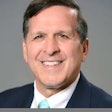
If you underfund your company, you're merely delaying the inevitable bankruptcy of your business, whether a dental practice, dental lab, or another company. I have witnessed this shortcoming in multiple industries, and it is not a pretty sight.
Being stiffed on a job, being shorted by a bank, and facing liquidation and bankruptcy are not unique to any particular industry. The following is a dental lab company's recent experience, and an even more recent dental practice oversight.
 Thomas Climo, PhD, is a dental practice management consultant and a past professor of economics in England.
Thomas Climo, PhD, is a dental practice management consultant and a past professor of economics in England.
How wonderful it must have seemed to have been the lab of choice of a major retail dental chain stretching across 25 states and hundreds of practices. The chain ordered its lab work in large blocks for economies of scale, and paid invoices through a centralized management network. The 30-day lag time between submission and delivery of orders and payment was customary and usual in the industry, so no fear of default appeared on the horizon to the dental lab executive team, which basically consisted of the owner, a lone business manager, and an administrative staff consisting of a woman who kept the books, sent out the bills, collected payments, and did the banking.
Justice can be swift, and, in less than 30 days of a particularly large order, the doors closed on every practice of this major chain. An uncollected debt piled up, while the government figured how to mete out financial justice. The chain had run afoul of Stark laws having to do with revenue splitting, fee sharing, and antikickback violations between a company managing the dental chain and the dentists running the clinics at the chain. (For a review of Stark laws, see a prior column of mine, "How to price DPM services in a noncorporate state," July 18, 2013.)
Meanwhile, the size of the receivable and its uncollected status threw a wrench in the lab's working capital and ability to continue servicing other customers without dipping further into its fast-depleting cash balance.
The lab owner and business manager approached the company's bank. Owing to collateral matrices at the bank, the working capital provided did not even equal a quarter of the outstanding balance from this one large unpaid invoice. Although a few orders could now be addressed, on the whole, with this loan, the company would flounder from lack of available funds to compete for and address new and existing orders. Liquidation was at hand, and bankruptcy the inevitable outcome.
Enter a special-purpose vehicle of a private equity fund. The fund, rather than look at a simple request for working capital to fulfill existing and new orders, looked instead at the whole balance sheet of the company. They realized that if current loans were replaced and consolidated, an extension of capital on a permanent basis could be forwarded to the lab. This would not only address the company's current working capital needs, but, more importantly, address the need of having to replace a large customer.
On close of the loan, the lab was able to hire additional sales and marketing staff to ready itself to meet the quarterly revenue targets in the covenants of the permanent loan from the private equity fund. The loan also contained a warrant option for the private equity group at a striking price to be sold, waived, or executed within the next two years.
The lab is now happily self-sufficient, having made every debt payment to the private equity group, and is positioning itself into acquisition of other labs. The same fund that provided special-purpose funding is now on the team to help the dental lab grow through acquisition. The private equity group holds a 4% equity participation in the lab, having executed the warrants that brought even more cash flow to the dental lab.
Whether an obvious shortfall in working capital, an unpaid receivable of a disproportionate size, or a failure of staff to appropriately bill and collect, the end result is the same — the loss of your business.
Finally, we examine what happened recently at a two-practice retail dental practice on the East Coast. Each practice brought in approximately $1 million in revenue. Owing to an astute and adept staff, the first practice was running pretty much on all cylinders and demonstrating earnings before interest, taxes, depreciation, and amortization (EBITDA) at about 21%.
The second practice, having an inattentive staff, had negative EBITDA of $90,000. This reduced the consolidated EBITDA to $120,000. Since debt service with interest was $150,000 per annum, this left the practices with a negative net income of $30,000 before a deduction for depreciation. At 3% of revenues, the capital maintenance or depreciation allocation plunged the net income even further into the red to a negative $90,000.
The company was on the racks ready to be picked apart by either a demanding creditor uneasy with the negative income status of the consolidated practices, or a lender who could see clearly the EBITDA would not cover the annual payment on their debt. Liquidation of assets and bankruptcy were at hand.
Enter someone like me, an outside financial consultant, who gets a call, from the practice principal, his bank, or one of the creditors to perform some kind of internal audit investigation to find out how a practice making $2,000,000 a year cannot afford to pay on a $150,000 annual debt.
In this case, what was wrong in the second practice was that the billings clerk -- the receptionist -- was unfamiliar with Patterson EagleSoft, and, although she aged receivables for collection activity from the largely Medicaid patient roll at the practice, she did not know how to hit a button to age receivables for collection activities for the private-pay patient roll.
All private-pay procedures in the prior year of reckoning were done without one invoice being sent out to one insurance carrier. The only receipt for private-pay procedures were those patients who paid in cash. Since 30% of the practice was private-pay, and cash accounted for only 5% of those outstanding balances, approximately $250,000 of invoices were never sent to the insurance carriers for payment.
In accounting, this kind of oversight by staff calls for the introduction of an extraordinary item addition and revision of the prior year's income statement. Assuring that these lost receivables had been billed and collected from the insurance carriers in the current year, the prior year's income statement could then be adjusted by the size of the oversight. Adding $250,000 to EBITDA of $120,000 totaled "true" prior year EBITDA of $370,000, easily enough to handle $150,000 of debt service and depreciation of $60,000. Revised net income became $160,000 -- a 12.5% move in net income margin from a -4.5% to a +8.0%.
Although this last case may appear dissimilar to the working capital dilemma of the preceding case of the dental lab business, I would point out that "lost" receivables are very much like the absence of an appropriately sized working capital loan.
Whether it is an obvious and straight shortfall in working capital, or an unpaid receivable of a disproportionate size to the revenues of the company, or a failure of staff to appropriately bill and collect on a sizable set of receivables, the end result and effect of each of these business problems is the same -- loss of your business.
The following are the conclusions/morals of our business stories:
- When down-and-out owing to an unforeseen economic occurrence, don't expect your bank to treat your concern in any other way than what ties in with their collateral rules and not your cash needs.
- For recognition of your true cash needs, you will need to turn to private equity.
- Hire attentive staff to turn receivables into cash and pay attention to "deals" in trade that if gone wrong will jeopardize the going concern status of your company, lab, or dental practice.
Finally, I should mention that there is one exception to the golden rule of banks placing their needs on a priority of collateral over the true working capital and acquisition price needs of either a state-licensed practicing dentist or a management group working with a state-licensed dentist -- the Bank of America Practice Solutions Group. I have found this group accommodating to the true needs of dental owner-practitioners, and did not want it to be put in the same collateral bag as other institutions that are frustrating to work with in advancing a workable and profitable dental practice.
Thomas Climo, PhD, is a professor emeritus of accounting and finance at a major university in the U.K. He has published extensively about the importance of modern managerial and financial decision-making for dentistry. He is a consultant to corporate and solo practitioner dental practice management companies in the states of Arizona, California, Connecticut, Nevada, New Hampshire, New York, and Massachusetts. He can be reached by email at [email protected] or by telephone at 702-578-2757.
The comments and observations expressed herein do not necessarily reflect the opinions of DrBicuspid.com, nor should they be construed as an endorsement or admonishment of any particular idea, vendor, or organization.



















